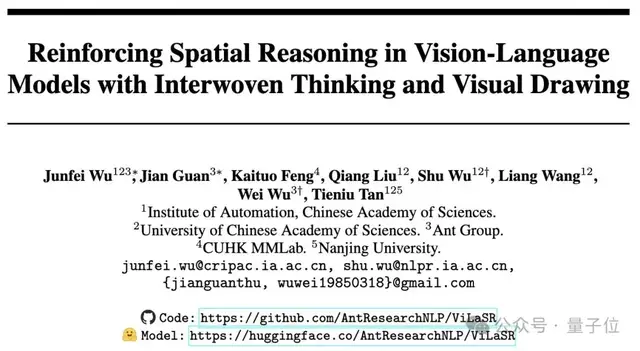Major Breakthrough in Human Spatial Reasoning with a Three-Stage Training Framework and 'Edge-Edge Thinking' Achieving 18.4% Average Improvement
The latest advancements in artificial intelligence focus on significantly enhancing models' ability to understand and perform spatial reasoning. A novel approach called "Edge-Edge Thinking" introduces a comprehensive three-stage training framework that has achieved an average performance boost of 18.4% across various benchmarks.
This innovative methodology was developed by a team specializing in natural language processing and computer vision, utilizing the large-scale multilingual model ViLaSR-7B.
By applying the "Edge-Edge Thinking" reasoning strategy, the model directly addresses complex spatial reasoning tasks, setting new state-of-the-art (SOTA) results. The training involved multiple datasets, including maze navigation, spatial evaluation, and multi-image reasoning benchmarks, leading to the notable 18.4% improvement over previous models.

On the VSI-Bench, a benchmark for spatial reasoning, ViLaSR-7B achieved an average accuracy of 45.4%, surpassing the previous best, Qwen2.5-VL-7B, by 12.7%.
Refined Self-Training Strategy for Enhanced Reasoning
This stage involves iterative self-reinforcement, where the model improves its reasoning capabilities through feedback loops and data augmentation, resulting in more robust performance.
Reflective Rejection Sampling to Improve Model Robustness
This mechanism evaluates and filters unreliable reasoning paths, ensuring higher accuracy and consistency in outputs.
Reinforcement Learning to Optimize Reasoning Strategies
In the final stage, reinforcement learning is used to fine-tune the model's reasoning pathways, guided by reward signals based on reasoning quality and accuracy, enabling the model to autonomously select the most effective reasoning routes.
Performance Comparison in Tasks
Compared to traditional methods relying on external tools or internal modules, the "Edge-Edge Thinking" approach demonstrates superior reasoning ability, especially in multi-image scenarios, by dynamically analyzing and integrating visual and spatial cues, thus reducing computational costs and increasing efficiency.
Advantages of the "Visual Reasoning" Framework
Unlike conventional models that depend heavily on external modules or detailed internal analysis, this framework emphasizes holistic reasoning through integrated visual and spatial cues, maintaining high reasoning quality across diverse scenarios, including cluttered or multi-angle environments.
Future Challenges and Directions
While promising, further research is needed to address reasoning under ambiguous or incomplete data and to enhance the model's generalization across different spatial reasoning tasks. The "Edge-Edge Thinking" strategy marks a significant step forward, with broad applications in robotics, autonomous navigation, and advanced visual understanding.